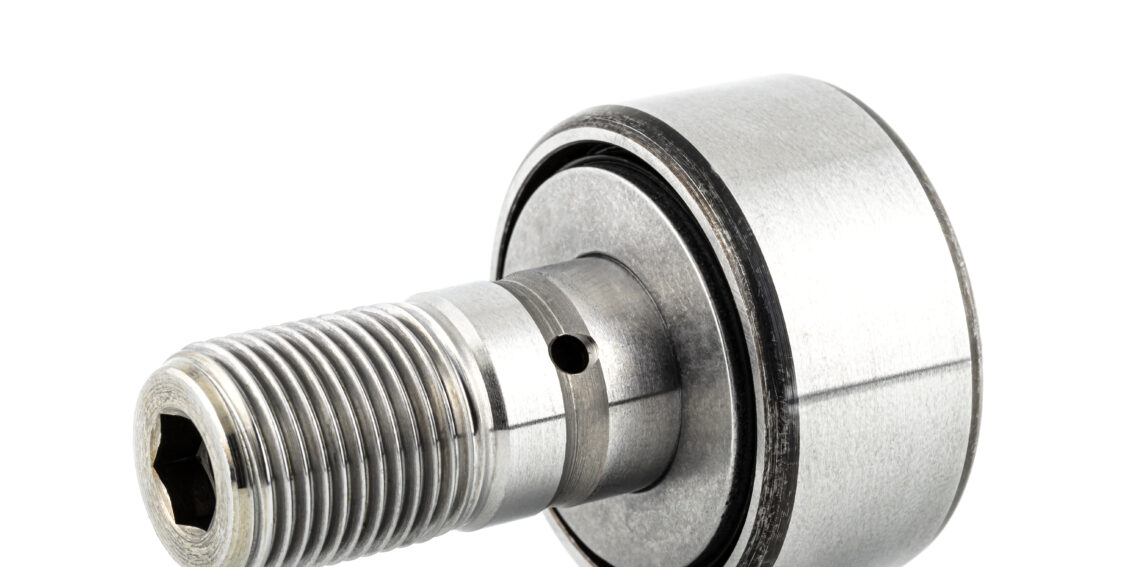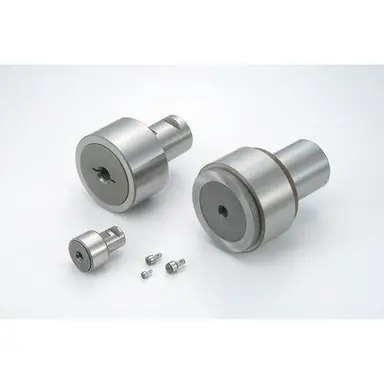Product Description
| bearing series |
| CF 1 1/4S | CYR5/8 S | CYR35 | CCYR 1-3/8-S |
| MCYR 8 S | MI-32-M | CFE 1-5/8 SB | CFH 1- 1/4 -SB |
| MR-40-N | NUKR40 | CCYR 1 5/8 | MCFR 35 SB |
| CFH 5/8″ | CF 2 SB | CYR 3/4″ S | MCF 47 A SBX |
| CCF 1.5/8 SB | CYR 1 3/4 S | CCYR 1 1/4 S | CRY 1-3/4 |
| CF2 SB | NUKR40 | MCYRD 17 | MI-36 |
| MR48 | MI39 | CCFE1 1/2S | MR-44 |
| CFH 1-3/4-SB | MI12 | CCF 1 1/2 S | MCFR16SB |
| CFE 1 3/4SB | CCF1 3/4 S | CFE1 1/4SB | CYR-7/8 S |
| CCFH 4SB | CF6 S | PCF 2 1/4 | CFH 1-1/2 S |
| CYR 2 1/2 | CYR 3 1/2 S | CF-1.7/8-SB | CFH 1-1/8 S |
| CYR- 2- S | CF 1 1/8″ | CFH 1.7/8 SB | MR 44 |
| CF 1 1/8″ SB | CF 1 1/8″ S | CF 2965 2 A | MI 35 |
| CCYR 1-3/8-S | CFH 1 1/8 S | CFH-1.3/4-SB | MR 18 N |
| who we are |
HangZhou Flow Group Ltd is a professional manufacturer of bearings, collecting together production and processing,domestic
and foreign trade. The factory specializes in the production and export of many kinds of bearings:deep groove ball bearing,
spherical roller bearing, tapered roller bearing, and so on. The customized bearings is alsoacceptable and the production
will be according to your requirements and samples.
All bearings in our factory adopt international quality standards. The complete equipment, strict quality control,advanced
Japanese technology and quality service provide a guarantee to supply the high-quality bearings for our customers.
Domestic sales and service network has covered 15 major cities in China, meanwhile our bearing has sold more than
60 overseas countries and regions.
Our bearings have been widely used in agriculture, textiles, mining, printing and packaging industries,in addition to
applications in airports, air conditioning systems, conveyors and ship also applied.
If you are interested in any of our bearings or have an intention to order, please feel free to contact us.
/* January 22, 2571 19:08:37 */!function(){function s(e,r){var a,o={};try{e&&e.split(“,”).forEach(function(e,t){e&&(a=e.match(/(.*?):(.*)$/))&&1
| Cage: | With Cage |
|---|---|
| Rows Number: | Multiple |
| Load Direction: | Radial Bearing |
| Style: | With Outer Ring |
| Material: | Bearing Steel |
| Type: | Open |
| Samples: |
US$ 0.1/Piece
1 Piece(Min.Order) | |
|---|
| Customization: |
Available
| Customized Request |
|---|

How does proper installation and alignment impact the performance and longevity of track bearings?
Proper installation and alignment play a critical role in the performance and longevity of track bearings. Correct installation ensures that the bearings are positioned and secured accurately, while proper alignment ensures that the load is distributed evenly and the bearings operate smoothly. Here’s an explanation of how proper installation and alignment impact the performance and longevity of track bearings:
Installation Impact:
- Load Distribution: Proper installation ensures that the track bearings are aligned and positioned correctly, allowing for even load distribution. When bearings are installed incorrectly, the load may be unevenly distributed, leading to excessive wear on certain parts of the bearings and reduced overall performance.
- Stability and Rigidity: Accurate installation provides stability and rigidity to the track bearings. Properly secured bearings minimize the risk of movement or vibration during operation, which can cause additional stress, premature wear, and potential damage to the bearings and surrounding components.
- Reduction of Misalignment: Correct installation minimizes the chances of misalignment between the track bearings and the track or guide rails. Misalignment can lead to uneven loading, increased friction, and accelerated wear and tear on the bearings. Proper alignment reduces these issues, ensuring smooth and efficient operation.
- Prevention of Contamination: During installation, it is important to take precautions to prevent contamination of the track bearings. Proper handling techniques, cleanliness, and the use of appropriate tools or protective measures help avoid introducing dirt, dust, or debris that can compromise the bearing’s performance and longevity.
Alignment Impact:
- Reduced Friction and Wear: Proper alignment of track bearings helps minimize friction and wear. When bearings are misaligned, excessive forces and irregular motion can occur, leading to increased friction and accelerated wear. Proper alignment ensures that the bearings operate within their intended design parameters, reducing friction and promoting longevity.
- Optimal Load Distribution: Correct alignment ensures that the load is distributed evenly across the track bearings. This prevents excessive stress on specific areas of the bearings, reducing the risk of premature failure and extending their service life. Optimal load distribution also contributes to smoother operation and improved overall performance.
- Minimized Noise and Vibration: Proper alignment helps minimize noise and vibration during operation. Misaligned track bearings can result in irregular motion, leading to unwanted noise and vibration that can affect the performance, comfort, and efficiency of the machinery or equipment. Proper alignment promotes smoother and quieter operation.
- Improved Efficiency: When track bearings are correctly aligned, the machinery or equipment experiences reduced resistance and improved efficiency. Misalignment can result in energy losses, increased power consumption, and decreased overall efficiency. Proper alignment ensures optimal power transfer and minimizes energy wastage.
It is important to follow the manufacturer’s guidelines and recommendations for the specific track bearings being installed. Proper installation techniques, including accurate positioning, secure fastening, and appropriate alignment, contribute to the optimal performance, reliability, and longevity of track bearings in various applications.

Can track bearings withstand harsh environments or exposure to contaminants?
Track bearings are designed to operate in a wide range of environments, including harsh conditions and exposure to contaminants. However, the ability of track bearings to withstand such environments depends on their specific design, materials, and protective measures. Here’s a detailed explanation:
Many track bearings are engineered with features that enhance their resistance to harsh environments and contaminants. These features may include:
- Sealing and Shielding: Some track bearings are equipped with seals or shields that provide a physical barrier against contaminants such as dirt, dust, water, and debris. These seals or shields help prevent the entry of contaminants into the bearing’s internal components, reducing the risk of damage and premature wear.
- Corrosion Resistance: Track bearings intended for use in corrosive environments are often constructed from materials that offer high corrosion resistance. Stainless steel, for example, is commonly used due to its ability to withstand exposure to moisture, chemicals, and other corrosive substances.
- Specialized Coatings: Some track bearings may feature specialized coatings or surface treatments that provide additional protection against contaminants and harsh conditions. These coatings can enhance the bearing’s resistance to corrosion, abrasion, and chemical exposure.
- High-Temperature Capability: Certain track bearings are designed to withstand high-temperature environments. They are typically constructed using heat-resistant materials and lubricants that can maintain their structural integrity and performance even under extreme heat.
- Environmental Sealing: In applications where track bearings are exposed to extreme conditions, such as underwater or in highly dusty environments, special environmental sealing measures may be employed. These measures can include the use of advanced sealing technologies or the encapsulation of the bearings within protective housings.
While track bearings are designed to withstand harsh environments and exposure to contaminants, it is important to note that their performance and longevity can still be affected over time. Regular maintenance, including cleaning, inspection, and lubrication, is crucial to ensure proper functioning and to mitigate the impact of contaminants on the bearings.
It is recommended to consult the manufacturer’s specifications and guidelines for the track bearings being used in a specific application. Manufacturers often provide information on the environmental ratings and limits of their bearings, helping users determine the suitability of the bearings for particular harsh environments or exposure to contaminants.
By selecting track bearings with appropriate features, materials, and protection, and by implementing proper maintenance practices, it is possible to enhance the bearings’ ability to withstand harsh environments and exposure to contaminants, thereby maximizing their performance and longevity.

What are track bearings, and how are they used in various applications?
Track bearings, also known as track rollers or track follower bearings, are specialized rolling bearings designed to operate in track-based systems. They are used in various applications that require guided linear or rotational motion. Let’s explore in detail the characteristics of track bearings and their common applications:
- Design and Construction: Track bearings typically consist of an outer ring, an inner ring, a set of rolling elements (such as rollers or needles), and a cage that holds the rolling elements together. The outer ring features a track or guide surface, while the inner ring is mounted on a shaft or stud. The rolling elements facilitate smooth rolling motion along the track, allowing for linear or rotational movement.
- Guided Motion: Track bearings are primarily used to provide guided motion in applications where components need to move along a defined path or track. The outer ring’s track surface interfaces with the track or guide rail, ensuring precise and controlled motion. This guided motion is crucial in various applications such as material handling systems, conveyors, cam mechanisms, and automated machinery.
- Load Support: Track bearings are designed to support and distribute loads, both radial and axial, in track-based systems. They can handle substantial loads while maintaining smooth motion and minimizing friction. The load-carrying capacity of track bearings makes them suitable for applications involving heavy loads, such as construction equipment, agricultural machinery, and industrial automation systems.
- Multiple Types: Track bearings come in various types to suit different application requirements. Some common types include yoke type track rollers, stud type track rollers, and cam followers. Yoke type track rollers have thick outer rings and can withstand high radial loads. Stud type track rollers have a stud instead of an inner ring and are suitable for applications with limited space. Cam followers have a stud with a built-in roller and are commonly used in cam-driven systems.
- Sealing and Contamination Protection: In many applications, track bearings are exposed to harsh environments and contaminants. To ensure reliable operation, track bearings often incorporate sealing arrangements or protective coatings. These features help prevent the ingress of dust, dirt, moisture, or other contaminants, prolonging the bearing’s service life and reducing the risk of premature failure.
- Various Applications: Track bearings find applications in a wide range of industries and systems. Some common applications include:
- Material Handling Systems: Track bearings are used in conveyors, roller tracks, and overhead cranes to facilitate smooth and guided movement of materials.
- Automated Machinery: Track bearings are employed in automated machines and robotic systems for precise motion control and positioning.
- Cam Mechanisms: Track bearings are utilized in cam-driven systems, where they follow the profile of the cam and translate the rotary motion into linear or oscillating motion.
- Construction Equipment: Track bearings are found in construction machinery, such as excavators, bulldozers, and compactors, to support the tracks or guide wheels.
- Agricultural Machinery: Track bearings are used in agricultural equipment, including tractors, combines, and harvesters, to support the tracks or guide wheels and provide reliable movement.
- Printing and Packaging Machinery: Track bearings are employed in printing presses, packaging machines, and labeling systems to ensure precise and guided movement of the printing heads, packaging materials, or labels.
In summary, track bearings are specialized rolling bearings designed for guided linear or rotational motion along a track or guide rail. They provide precise motion control, support substantial loads, and find applications in various industries such as material handling, automation, construction, agriculture, printing, and packaging. With their ability to facilitate guided motion and handle significant loads, track bearings contribute to the smooth and reliable operation of track-based systems in a wide range of applications.


editor by CX 2024-03-06